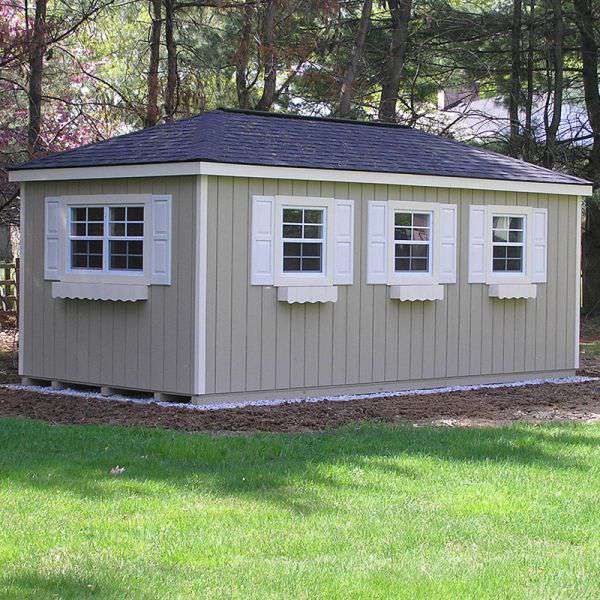Gable Shed Crafting Drafts
10 x 4 Garage Shed Architecture Diagrams: Tips To Contemplate While Designing A Patio Shed

Take a good look at our size calculator, we created it to help take some of guesswork out of choosing the right size space for you. When a piece of sheeting lines up properly then nail it into truss below. The schematics are easy to follow and instructions are clear. Contact an experienced carpenter to discuss eaves vs trusses for your home. On addition, all trusses should have the exact same size and shape, otherwise roof of large outbuilding won't have a neat appearance. Before making the purchase, first, a list of all the items (https://www.shedplansz.com/24x24-garage-shed-plans) you would be storing. Taking into account the side of the shed, 2x4s will provide enough support for floor.
In all honesty the ratio used to craft cement is very dependent on your opinion and environments its exposed to, if you're interested many people have done more detailed explanations on it. It may seem odd to construct the trusses before the walls are done, but we need to use the floor of shed as a jig layout so trusses need to be done first. Connect a cable or strap to the ring or loop to anchor shed. This makes pulling easier and usually fits better on a flatbed or through gates. The green posts are for front of barn.
Tarps can trap moisture, promote rot, and be difficult to remove after a snowfall. Then tack one corner to hold it square. The base should be same dimensions as your shed, but can be wider. Cut (find) sheets to right size with a circular saw having a sharp blade with fine teeth. The intersections of the string indicate the locations of a post corner. It can be a skid, gravel, patio stone, block or post, or even plastic construction. You will need two additional 2 x 4s for each wall at the top of stud frame and two for the ground plate at the bottom.
Start an 8-penny nail as a toenail, 1 inch from end of joist and 1 inch from the bottom of the joist. Rip two blocks to fit snugly into the tops of columns. Cut bottom end of the rafters as shown on illustration above. Once all posts are properly located and braced, mix concrete and pour around the posts. Install 1x8 fascia over the top rafter ends. Because trusses are carefully engineered units that shouldn't be cut, they are not a good choice for roofs that may be modified at a later date. Pole construction is one of the most economical methods of building construction, and it's also relatively easy.
Even if a sapling is growing nearby, remember that it won't stay that size forever. Just left it dirt, pushed some up against the side to discourage critters from taking up residence. Although heavier construction, they still need anchoring. These cuts are best achieved with shed disassembled. There may be a few things that you don't have to do, but the floor is certainly one of those you need to pay closer attention to. You have one shot at getting correct trusses because they're custom built for each specific house. If it doesn't, construct any necessary adjustments to it and record these adjustments so that the remaining trusses would be identical.
You may omit ridge board if you secure the rafters to each other with a gusset plate. Shed dimensions dictate how large an area you need. Here's what finished fold looks like. Check the plans for the exact position of the ridge. The county's regulations were for any structure over 200 square feet would need a permit before building. Align the wooden parts at both ends before inserting screws, to get a neat appearance. Paint wood preservative onto the cut ends of beams before you bolt them down, and countersink nuts and washers so walls would slide on easily. These are typically easiest types of roof to create and take the least amount of materials and time.
Measure the width of a joist from the lower edge to the underside of the subfloor to determine the width of the 2-inch-thick framing lumber for blocks. If your back yard is fairly flat, you're in luck. Continue installing blocking in a staggered fashion in a straight line for all joist cavities. Then apply a thin bead of clear silicone in the recess and embed acrylic sheet in it. A large majority of our clients are do it yourselfers who have no construction experience and complete highly looking projects. Place a board or a piece of hardwood to fill the gap between each two rafters.
